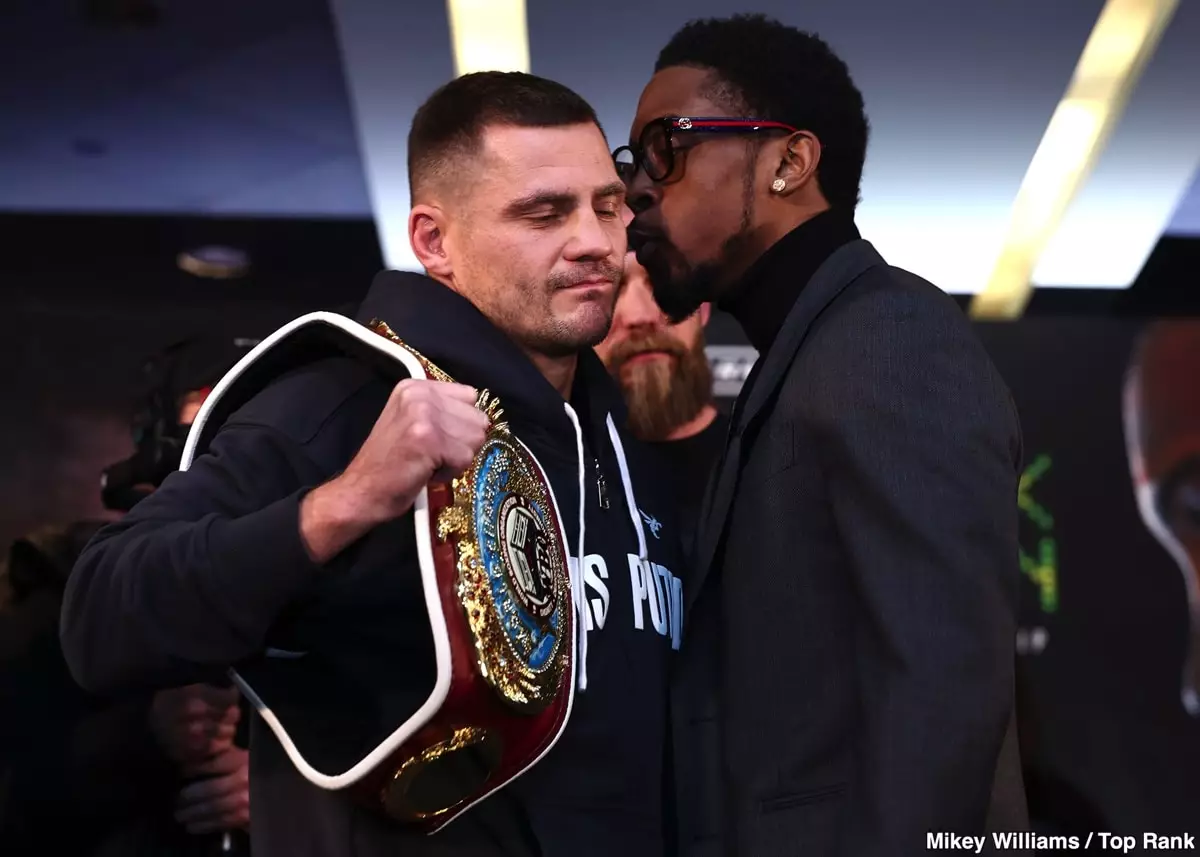Boxing is not just a physical sport; it’s a spectacle filled with personalities, rivalries, and controversies that often overshadow the athletes’ performances inside the ring. The recent uproar involving Keyshawn Davis, an undefeated fighter under the Top Rank banner, exemplifies the complexities of public scrutiny, racial implications, and the expectations imposed on athletes. It highlights a scenario that raises questions about accountability and support within the boxing community, as well as the double standards that often come into play.
Before his highly anticipated press conference against WBO lightweight champion Denys Berinchyk, Keyshawn Davis received a peculiar package from room service: a box of watermelons and bananas. Instead of focusing on the fight, this unsolicited delivery sparked outrage, leading Top Rank to publicly express their dismay, labeling the act as insensitive and unjust. Their statement not only voiced support for Davis but condemned the notion of such gestures having any place in sports.
This incident incited a media frenzy, particularly after Davis accused Berinchyk of orchestrating the delivery, claiming it was a racially charged insult aimed at undermining his character. In a world already rife with racial tension, such accusations can have vast repercussions. The spotlight was not solely on the implications of the package but also on Davis’s intense accusations towards Berinchyk, a move that some might argue escalated the situation unnecessarily.
What becomes alarming in this situation is the apparent silence and lack of substantive response from Top Rank regarding the accusations made by Davis against Berinchyk. While they were quick to denounce the box of fruit as unacceptable and supported Davis, they did not address the serious allegations hurled at Berinchyk during the press conference. This raises questions about bias and fairness in how situations are handled based on an athlete’s popularity or perceived victimhood. If the roles were reversed, would the reactions be the same, or would we see a different set of standards emerging from the promotional company?
This dynamic suggests a potential double standard in the media and promotional responses to accusations in the fight world. Are fighters of different backgrounds treated equally when controversies arise? The ambiguity in response to accusations can exacerbate the environment of mistrust and tension not only between fighters but also among fans and stakeholders invested in the sport.
As Davis prepares to step into the ring against Berinchyk, much of the dialogue surrounding him has shifted from his skills in boxing to his pre-fight controversies. Trainer Brian “BoMac” McIntyre spoke about the essential strategy for Davis’s upcoming fight, emphasizing the importance of fighting style and skill. Yet one wonders if the mental distraction of the preceding accusations would affect Davis’s mindset as he seeks to remain undefeated.
Moreover, questions linger about Davis’s future beyond this bout. Should he defeat Berinchyk, McIntyre suggests a potential matchup against high-profile opponents like Gervonta “Tank” Davis. However, this perceived confidence might overshadow a pertinent concern: the struggles that Davis has faced even against less formidable opponents could indicate vulnerability as he seeks to climb the ranks against elite fighters. The speculations surrounding his ability to compete against someone like Tank Davis may be unwarranted if Davis cannot manage his performance amid the noise swirling around him.
The boxing world is a fierce arena, filled with physical and psychological battles. The episode involving Keyshawn Davis serves as a reminder that athletes carry more than just their weight classes; they must navigate complex narratives that often overshadow their pursuit of championships. As Davis gears up for what could be a defining fight, the lingering ramifications of outside controversies may serve as both a fuel and a hindrance. How he manages this pressure will ultimately shape not only his career trajectory but also the ongoing conversations about accountability and ethics in a sport where the stakes are remarkably high.
In the end, every fighter hopes to be judged by their performance in the ring, but the reality is that they often find themselves contending against perceptions both on and off the canvas.

